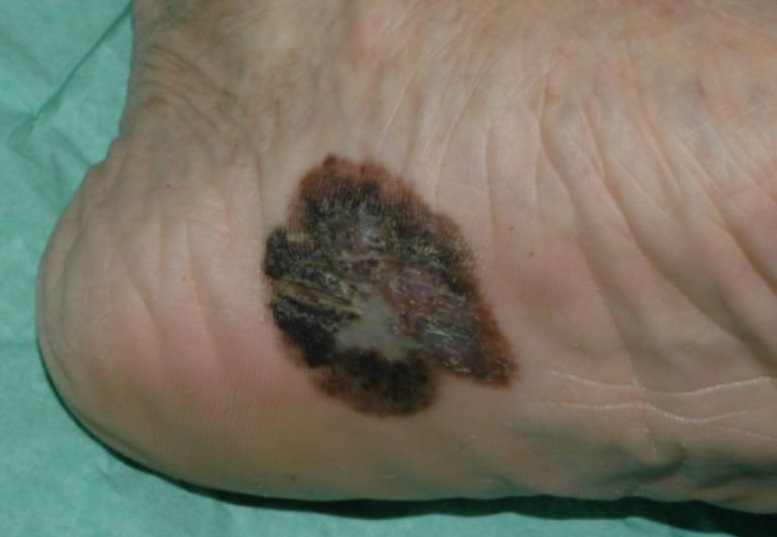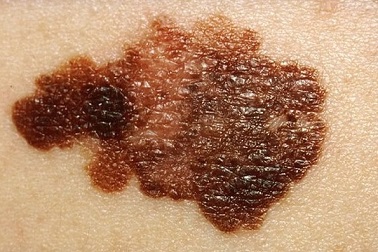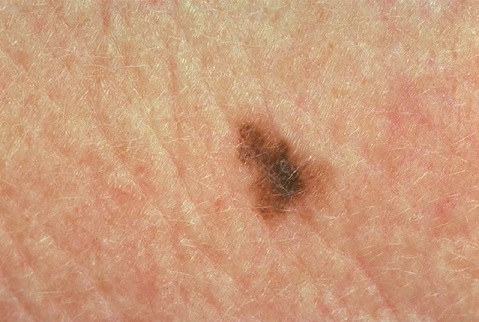Moles are usually small, dark brown spots that can appear anywhere on the skin. They develop because of clusters of pigmented cells. You can have them anywhere on your body, including your armpits, scalp, between your fingers, and under your nails. Most people have 10-45 moles, which develop gradually by age 40. Moles may change over time and may even vanish completely. They can also become darker and larger, especially due to hormonal changes of pregnancy and adolescence. Many people worry about having a mole on bottom of foot. These moles can cause discomfort, but are not always serious.
Should You Worry about Mole on Bottom of Feet?
You do not need to worry about having a mole on the bottom of your foot if it is small, all one color, and painless. You may want to talk to your doctor though in case your mole is large, bumpy, and has different shades of brown. You should also seek medical attention when the mole does not have smooth edges and makes you feel uncomfortable. This could be a sign of melanoma.
To determine whether a spot or mole may be melanoma, you should use the ABCDE guide.
- A: It has asymmetrical shape. It means half of the mole is different from the other half.
- B: It has irregular borders. You may also notice scalloped or notched borders sometimes.
- C: It has changing colors. It means your mole keeps changing colors over time.
- D: It has a larger diameter. You should be worrying about a mole larger than 6mm.
- E: It evolves over time. It means the mole changes its shape, size, height, or color.
Keep in mind that the appearance of cancerous moles may vary greatly. Some may have all of the abovementioned features, while others may have a couple only. It is better to see your doctor for confirmation. Moreover, you should seek medical attention if your mole itches, is painful, bleeds, grows repeatedly, and appears after you are 30 years old.
Types of Melanoma That Can Appear on Foot
Melanoma or malignant tumor begins in a skin cell called melanocytes. Located in the epidermis, these cells help produce a naturally occurring dark pigment called melanin. These types of growths are common on the sole of the foot, but you can have them anywhere on the ankle or foot.
Although foot melanoma can cause life-threatening consequences, it is potentially treatable, especially when diagnosed early and managed properly. Moles usually develop after being exposed to harmful UV light from the sun. However, mole on bottom of foot is cancerous not because of UV exposure but because of exposure to carcinogenic chemicals, viruses, or chronic inflammation.
1. Acral Lentiginous Melanoma
This is a form of melanoma usually appearing on your sole, palm, or beneath the nail. It can develop on your hands as well, but it is far more common on feet. This form of melanoma can develop within an existing mole as well as in normal-appearing skin. You usually develop a flat patch of discolored skin first, which is mainly because the cancerous cells are within the epidermis in the beginning. Acral lentiginous melanoma may take years to become invasive and that is when the cancerous cells enter the dermis.
Who Gets It?
You are at an increased risk of developing a mole on bottom of foot that is in fact acral lentiginous melanoma if you are over the age of 40. Moreover, it is relatively more common in dark-skinned individuals – about 29-72% of cases involve dark-skinned individuals and only 1% of fair-skin individuals develop it. Keep in mind that acral lentiginous melanoma is not related to sun exposure. The exact cause is still not clear.
What Does It Look Like?

In the beginning, acral lentiginous melanoma looks like a stain on the skin, but you can recognize it considering border irregularity, asymmetry, diameter, and color variation. Here are some important characteristics of acral lentiginous melanoma:
- Large Size: It can be larger than 6mm in the beginning.
- Color: It has variable pigmentation with a mixture of blue-grey, brown, red, and black colors.
- Surface: The surface is usually smooth in the beginning but becomes thicker with time.
- Ulceration: It is common to experience bleeding and ulceration in the area.
2. Nodular Melanoma (NM)
.jpg)
About 15% of all melanomas fall in this category. Nodular melanoma develops rather quickly and usually affects middle-aged people. You only develop it on parts of the body exposed to the sun. It looks like a raised area, usually of black or dark brown color. It is important to have it removed as soon as possible or it grows deeper into the skin.
3. Superficial Spreading Melanoma (SSM)

It is probably the most common type of melanoma with 70% of cases involving superficial spreading melanoma. It affects middle-aged people and grows outwards. It does not spread to other body parts unless it begins to grown deeper into your skin. It is important to have a mole on bottom of foot checked, especially if it has an irregular edge and is getting bigger.
4. Lentigo Maligna (LM)

This is quite a rare condition with only 10% of melanoma cases classified as lentigo maligna melanoma. It usually develops from Hutchinson's melanotic freckle or slow growing pigmented areas of skin. It usually affects elderly people and appears in areas exposed to sun. People who spend a lot of time out in the sun are likely to develop it on the face as well. It appears flat and grows outwards. Its size and shape may change over time. It forms lumps when it begins to grow deep into your skin.
